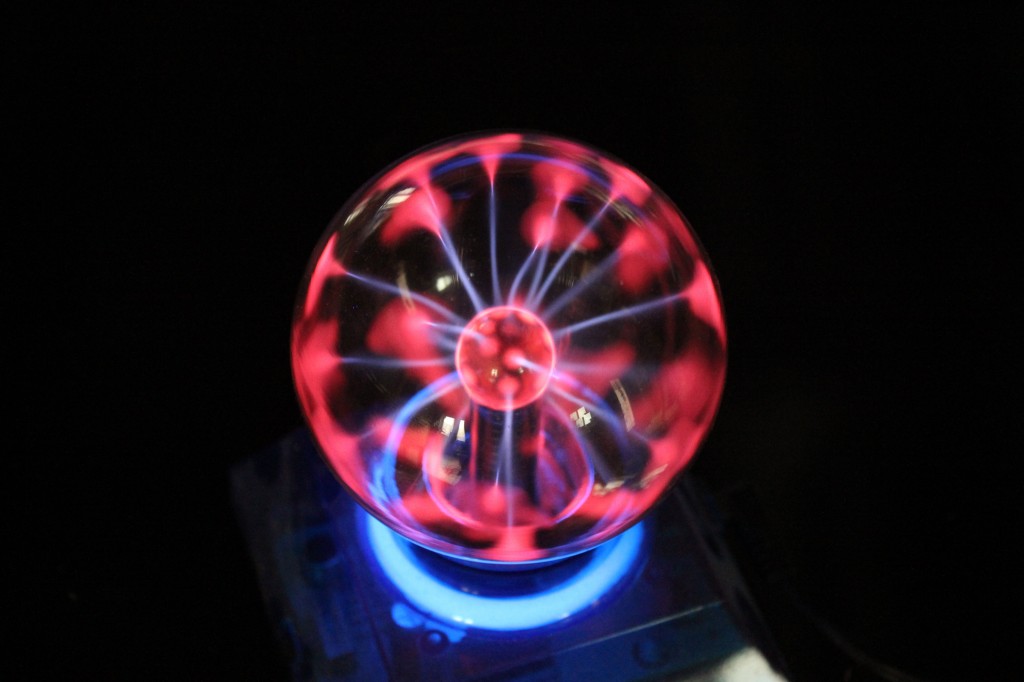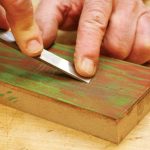We may receive a commission when you use our affiliate links. However, this does not impact our recommendations.

This toy, called a plasma globe, effectively demonstrates electricity build-up in a DIY dust collector.
Woodworkers love their toys. Table saws, jointers and planers are serious big-boy (and big-girl) toys. Planes, chisels and saws are cherished, too, and though we all take our craft and hobby seriously, we just seem to love our toys. We collect woodworking toys and play with them as much as we can. Lately, though, a small non-woodworking toy called a plasma globe (pictured above) has caught my fancy – and I can’t stop playing with it.
During my recent Popular Woodworking webinar “Dust Collection Ductwork,” I spent a bit of time describing how to best dissipate static electricity that collects on or in a PVC ductwork system. We covered some theory and several pragmatic solutions, but since electricity is not normally visible, explaining how electrons overcome resistance, gather and flow to a point source took a little blind faith on the participants’ part. If only I had the plasma globe then!
A special power inverter transmits energy into a mix of noble gases inside the plasma globe, and tendrils of energy form between the electrode and the inside surface of the globe. The energy is seeking to escape and reestablish equilibrium of charge. Notice in the photo above how the tendrils are separated. This is because like charges repel. Each tendril is competing for space on the inside surface of the globe and the tendrils move because the gas surrounding each tendril is heated and therefore rises, carrying the tendril with it.
Now notice in the photo below what happens when I touch a finger (part of my conductive body) to the outside of the globe.

Charged electrons try to escape the plasma globe at the point of contact with a conductive body (Steve’s finger).
By placing my finger against the non-conductive glass, I am providing an alternative discharge path of less resistance and one that is neutral in charge. The other energy tendrils are reduced in size and intensity, and the tendril going to my finger is brighter because more power is flowing through.
This is a great demonstration of how a system can be set up to easily dissipate static charges from a dust collection system.
The DIY Dust Collector – How to Avoid Spark Potential
When wood chips and dust bounce and slide along the walls of PVC dust collection ductwork, they give up electrons in a process called the triboelectric effect. When too many of these negatively charged electrons accumulate they seek to reestablish charge neutrality by flowing toward a neutral or positively charged surface. Do nothing and these electrons will eventually build up to the level that they may overcome the resistance of air and produce a spark. It is much better to provide a continuous path for these excess electrons to flow away and dissipate harmlessly.
A static dissipation system requires only a small investment in time and money. Bare copper wire is connected to screws whose tips just barely poke through the walls of the PVC pipe. Like my finger touching the plasma globe, the screw tips are low resistance gathering places for electrons. Electrons flow through the screws and into the copper wire. The bare copper wire is tightly wrapped around the outside of the ductwork, providing additional pathways for stray excess electrons to flow. The screws and copper wire form a continuous circuit connected to an earth ground, providing a safe and effective pathway to continuously wick away excess electrons and avoid the potential of dangerous (or at least “shocking”) sparks.
The “Dust Collection Ductwork” webinar describes exactly how to set up an effective static dissipation circuit and much more. In a “holistic” approach, the webinar starts with a comparison of ductwork materials, covers the tools and techniques needed, provides critical tips for achieving a professional and efficient installation and helps assure that any dust collection machine performs at its optimum potential. If you would like to watch and listen to a recording of the live event, click here.
Start building your DIY dust collector today!
–Steve Johnson
Read Steve’s article.about the debate surrounding the DIY dust collector and fire danger on the Highland Woodworker blog.
Here are some supplies and tools we find essential in our everyday work around the shop. We may receive a commission from sales referred by our links; however, we have carefully selected these products for their usefulness and quality.







